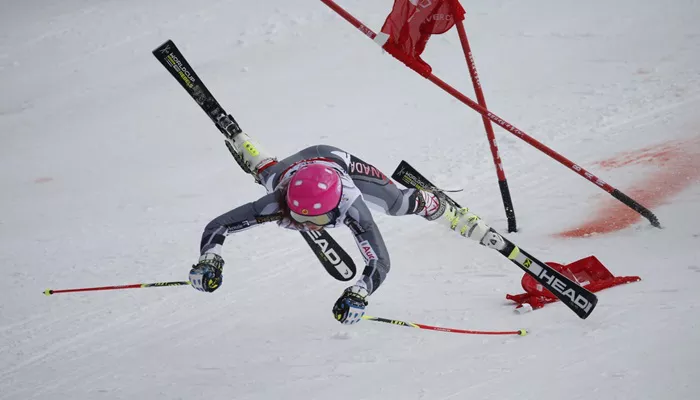Skiing is an exciting and rewarding activity for kids, offering fun, adventure, and valuable physical exercise. However, ensuring children have the right equipment, clothing, and preparation is essential for a safe and enjoyable experience on the slopes. Whether they are beginners or seasoned young skiers, having the proper gear and knowledge will help them feel comfortable and confident.
This guide covers everything kids need for skiing, from essential clothing and gear to safety equipment and useful tips for parents.
Why Proper Preparation is Important for Kids’ Skiing
Taking kids skiing is a great way to introduce them to an exhilarating winter sport, but preparation is key. Proper gear and clothing will keep them warm, comfortable, and safe in varying weather conditions. Ensuring they have the right equipment also helps them learn efficiently and enjoy their time on the slopes without discomfort or frustration.
Essential Ski Clothing for Kids
Dressing properly is one of the most critical factors in keeping kids warm and comfortable while skiing. Layering is the best approach, allowing adjustments for temperature changes throughout the day.
1. Base Layer (Thermal Underwear)
The base layer is responsible for keeping kids warm and wicking moisture away from the skin. Look for:
Materials: Merino wool or synthetic fabrics (avoid cotton, as it retains moisture and causes chills).
Fit: Snug but not too tight, allowing for mobility.
Types: Long-sleeved thermal tops and leggings.
2. Mid Layer (Insulation Layer)
The mid-layer traps body heat and provides insulation.
Options: Fleece jackets, down vests, or insulated sweaters.
Fit: Should be warm yet breathable to prevent overheating.
Adjustability: Zippers help regulate temperature as kids ski.
3. Outer Layer (Ski Jacket and Pants)
The outer layer protects against wind, snow, and moisture.
Materials: Waterproof and windproof materials such as Gore-Tex or similar fabrics.
Features:
Adjustable cuffs and hems for a snug fit.
Breathable vents for temperature control.
Reinforced knees and seat for durability.
4. Ski Socks
Material: Wool or synthetic blends (avoid thick cotton socks, which can cause blisters).
Fit: Snug but not too tight, covering the calf for warmth.
Extras: Having an extra pair in the ski bag is always a good idea.
5. Gloves or Mittens
Mittens vs. Gloves: Mittens provide more warmth, while gloves offer better dexterity.
Waterproofing: Essential to keep hands dry and warm.
Extras: Wrist straps help prevent losing them on the slopes.
6. Helmet Liner or Balaclava
Worn under the helmet, these provide additional warmth and protection from windchill.
7. Neck Gaiter or Buff
A neck gaiter or buff keeps the neck and face warm and can be pulled up over the nose in cold conditions.
Essential Ski Equipment for Kids
Having the right ski equipment is crucial for kids’ safety and comfort while learning and improving their skills.
1. Skis
Size: Shorter skis are better for beginners, usually reaching between the chin and nose.
Flexibility: Softer flex skis help with easier turns and control.
Bindings: Should be properly adjusted by a professional to ensure correct release settings.
2. Ski Boots
Fit: Should be snug but not too tight, allowing movement without excessive pressure.
Flex Rating: Softer flex for beginners; stiffer boots as kids progress.
Easy-to-use buckles help kids put on and remove boots independently.
3. Ski Poles (If Needed)
Beginners: Typically, young kids do not need poles until they develop better skiing skills.
Proper Length: When holding the poles upside-down under the basket, their arms should form a 90-degree angle.
4. Ski Helmet
Fit: Should sit snugly on the head with no gaps and cover the forehead properly.
Safety: Look for certifications such as ASTM F2040 or CE EN 1077.
Extras: Built-in ventilation and adjustable straps enhance comfort.
5. Ski Goggles
Lens Tint: Different tints for different weather conditions (yellow for low light, darker tints for bright days).
Anti-Fog Coating: Prevents goggles from steaming up.
Fit: Should fit well with the helmet and provide a clear field of vision.
Safety Gear for Kids on the Slopes
Ensuring kids are safe while skiing is a top priority. In addition to a helmet, consider these safety measures:
1. Wrist Guards (for Snowboarders or Beginner Skiers)
Wrist guards help prevent injuries when kids fall.
2. Back Protector
For kids who are more advanced or skiing in terrain parks, a back protector offers extra safety.
3. Ski Harness (For Beginners)
A ski harness with a leash helps parents control young children on slopes, preventing them from gaining too much speed.
4. GPS Tracker or ID Card
For Larger Ski Resorts: Attaching a GPS tracker or an ID card with emergency contact details helps locate kids if they get lost.
Additional Essentials for a Ski Day
Beyond clothing and gear, there are extra items that can make a ski trip smoother for kids and parents:
Sunscreen and Lip Balm: High-altitude sun exposure can be intense, even on cloudy days.
Hand and Toe Warmers: Useful for particularly cold days.
Snacks and Water: Keeping kids hydrated and fueled helps maintain energy levels.
Extra Clothing: A spare set of gloves, socks, and a dry shirt in the ski bag can be useful in case of wet gear.
Tips for Parents Taking Kids Skiing
Start with Lessons: Professional ski instructors can teach kids proper techniques and safety tips more effectively than parents.
Take Breaks: Kids get cold and tired faster than adults, so plan for warm-up breaks.
Encourage Fun, Not Perfection: Make skiing enjoyable rather than focusing too much on perfecting techniques.
Dress Kids Warmly: If they are warm and dry, they’ll have a better experience.
Check Weather Conditions: Avoid extreme conditions that could make skiing unsafe or unpleasant for kids.
Conclution
Preparing kids for skiing requires careful consideration of clothing, equipment, and safety measures. By ensuring they have the right gear, parents can set them up for a fun, comfortable, and safe skiing experience. Whether they are taking their first runs on a bunny slope or advancing to more challenging terrain, the right preparation makes all the difference in their enjoyment and skill development.

